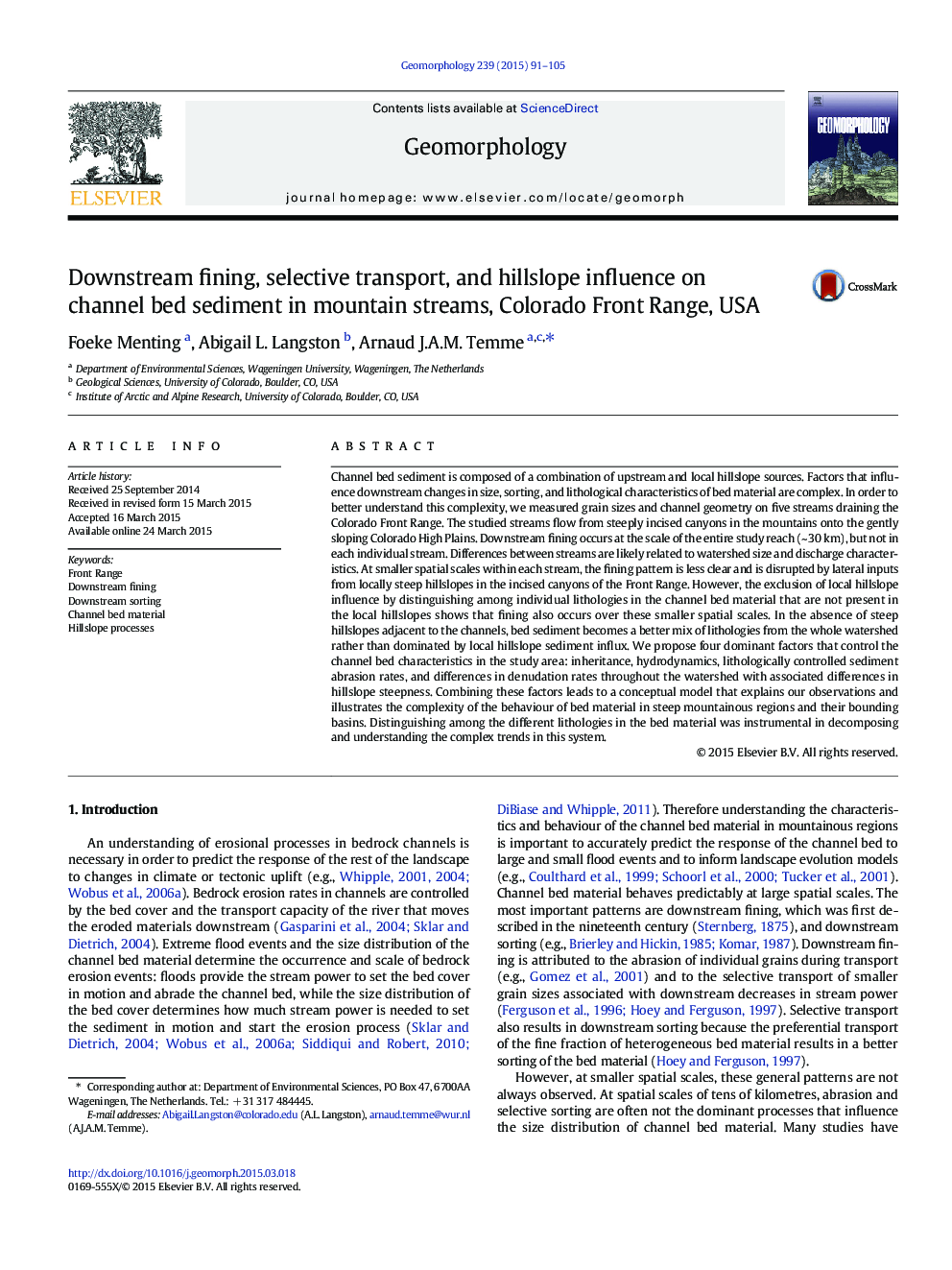| Article ID | Journal | Published Year | Pages | File Type |
|---|---|---|---|---|
| 4684285 | Geomorphology | 2015 | 15 Pages |
•Four processes control the behaviour of channel bed material in Rocky Mountain Front Range creeks.•Fining occurs at large spatial scale (~ 30 km) but less at smaller scales (2–10 km).•Steep hillslopes strongly influence bed material size and lithological composition.•A conceptual model illustrates the (complex) behaviour of the bed material.•Discerning between lithologies improves the understanding of the observed patterns.
Channel bed sediment is composed of a combination of upstream and local hillslope sources. Factors that influence downstream changes in size, sorting, and lithological characteristics of bed material are complex. In order to better understand this complexity, we measured grain sizes and channel geometry on five streams draining the Colorado Front Range. The studied streams flow from steeply incised canyons in the mountains onto the gently sloping Colorado High Plains. Downstream fining occurs at the scale of the entire study reach (~ 30 km), but not in each individual stream. Differences between streams are likely related to watershed size and discharge characteristics. At smaller spatial scales within each stream, the fining pattern is less clear and is disrupted by lateral inputs from locally steep hillslopes in the incised canyons of the Front Range. However, the exclusion of local hillslope influence by distinguishing among individual lithologies in the channel bed material that are not present in the local hillslopes shows that fining also occurs over these smaller spatial scales. In the absence of steep hillslopes adjacent to the channels, bed sediment becomes a better mix of lithologies from the whole watershed rather than dominated by local hillslope sediment influx. We propose four dominant factors that control the channel bed characteristics in the study area: inheritance, hydrodynamics, lithologically controlled sediment abrasion rates, and differences in denudation rates throughout the watershed with associated differences in hillslope steepness. Combining these factors leads to a conceptual model that explains our observations and illustrates the complexity of the behaviour of bed material in steep mountainous regions and their bounding basins. Distinguishing among the different lithologies in the bed material was instrumental in decomposing and understanding the complex trends in this system.
